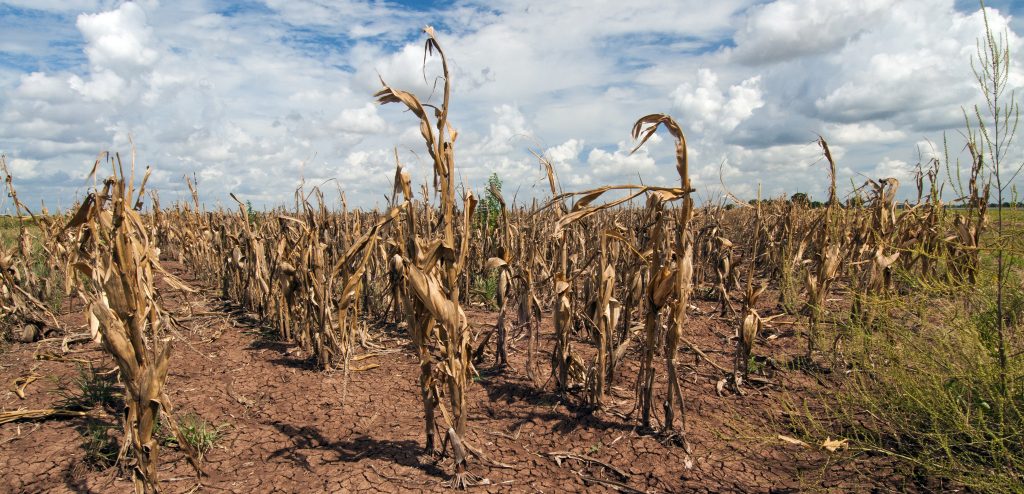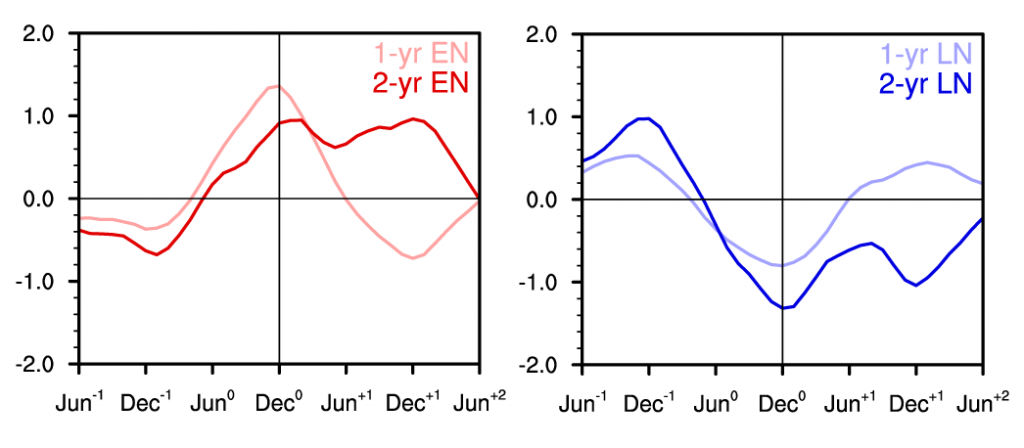
A scientific paper by a graduate student at the University of Texas Institute for Geophysics (UTIG) has explained why some El Niño and La Niña events last longer than others, a result that could help predict their worst effects. The paper, which was published in August in the Journal of Climate, shows that El Niño events can return for a second year if they begin late in the summer or fall. Long-running La Niña events are triggered when the preceding El Niño is particularly intense.
“We found that it’s possible to predict these long-lasting events up to two years in advance,” said lead author Xian Wu who is studying a doctoral degree at the UT Jackson School of Geosciences.
Pedro DiNezio, a UTIG research scientist and coauthor on the paper said: “Wu’s work is significant because it could be used to benefit communities in the U.S. and throughout the world who are vulnerable to the worst effects of El Niño and La Niña.”
El Niño and La Niña are two opposite phases of a single climate phenomenon that originates in the tropical Pacific Ocean. The El Niño phase begins as a bulge of unusually warm water in the Pacific Ocean that triggers a cascade of oceanic and atmospheric disruptions across the world. La Niña is equally disruptive but is characterized by unusually cold Pacific waters. Normally, the Pacific Ocean returns to normal conditions after about 9-10 months. Sometimes, however, El Niño or La Niña return for a second or even third year. The ecological damages, including drought-ruined crops in Texas, fish stock crashes in Peru and widespread flooding in Australia, pile up during these ‘double-dip’ events increasing their destructive power.
To tease out what was causing long El Niño and La Niña events, Wu analyzed ocean and atmospheric climate records ranging from 18th century ship logs to present day satellite observations. She confirmed her conclusions using state-of-the-art climate models which simulated the El Niño and La Niña events.

Her results show an intricate system of interconnected oceanic and atmospheric mechanisms that can trigger climate feedback loops as far away as the tropical Atlantic and the Indian Ocean. These climate feedback loops, it turns out, are the mechanism that determines the duration of El Niño and La Niña.
“If the response of the oceans and atmosphere are insufficient to terminate El Niño or La Niña they tend to continue for another year,” explained Wu.
Yuko Okumura, co-author and research scientist at UTIG said: “Xian is the first to systematically explain the physics driving the duration of both El Niño and La Niña events in such unprecedented detail.” said Okumura.
Wu said that the next step is to attempt real-world predictions of double-dip El Niño and La Niña events and hopefully pave the way to predicting their effects on weather throughout the world.
Wu’s research was supported by the NOAA Climate Program Office Modeling, Analysis, Predictions, and Projections Program and the National Science Foundation. Climate models are the Community Earth System Model version 1 and the Community Climate System Model version 4, and supercomputing was provided by the Texas Advanced Computing Center’s Lonestar 5.
For more information, contact: Constantino Panagopulos, UTIG, 512-574-7376
